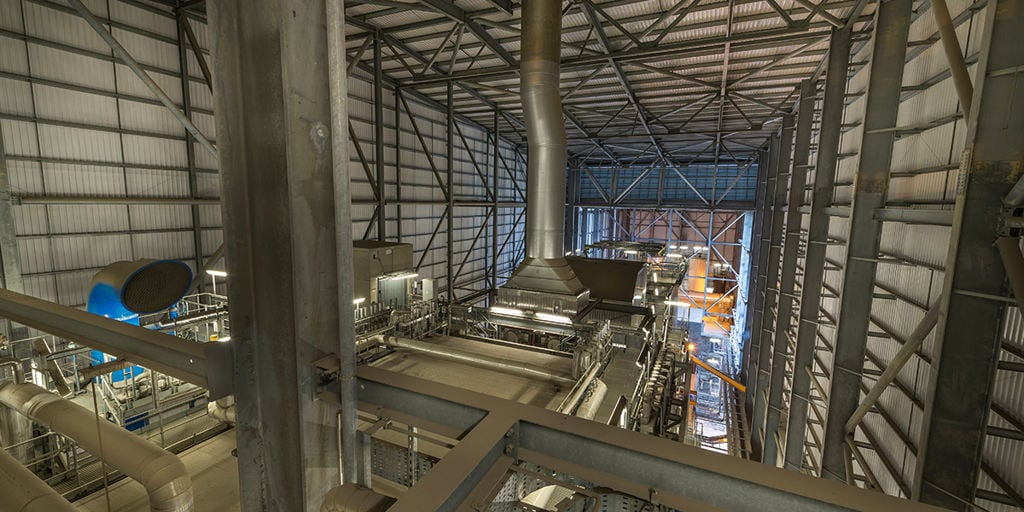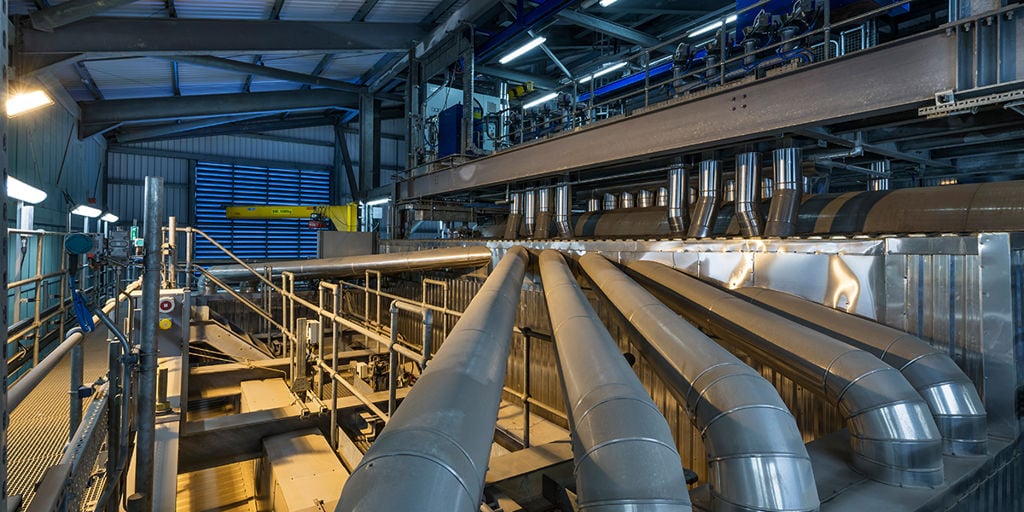Turbine automation is no longer a black box at FCC Environment - now fully integrated into the main plant control system
FCC Environment’s operation and maintenance teams wanted more interaction with their turbine automation controls. The existing system functioned like a “black box,” leaving operators without the insights needed to make informed decisions. The issue was resolved by removing the original system and integrating the turbine automation into the existing Valmet DNA Automation system on site. This significantly improved the operation and maintenance teams' visibility into the turbine process and enabled more proactive maintenance.
FCC Environment operates and maintains an Energy from Waste (EfW) facility in Lincolnshire, in the East Midlands, UK, commissioned in 2014. Owned by the Lincolnshire County Council, the plant treats up to 190,000 tonnes of residual waste diverted from landfills and generates 105,000 MWh of electricity.

FCC Environment operates and maintains the Energy-from-Waste facility serving Lincolnshire in the East Midlands, UK.
Moving from two systems to one
James Carver, EC&I team leader at FCC, “We have always had a good relationship with Valmet and its DNA distributed control system (DCS), which controls the whole plant,” he says. “But we never had much interaction with the company that installed the original turbine control system. We’d always had a concern that the system wasn’t being properly maintained. If it failed one day, we would be exposed,” Carver continues. “None of our operators had much interaction with it. They weren’t comfortable using it. It was a so-called ‘black box’ for us.”
“I admit I did not even know Valmet could provide steam turbine automation until it came up in discussion,” Carver says.
I admit I did not even know Valmet could provide steam turbine automation until it came up in discussion.”
In the UK alone, nearly 30 waste-to-energy plants use our control systems. We’re used to replacing old black boxes and integrating the controls into our plantwide Valmet DNA Automation system.”
Valmet has 30 years of experience with turbine automation. “In the UK alone, nearly 30 waste-to-energy plants use our control systems. We’re used to replacing old black boxes and integrating the controls into our plantwide Valmet DNA Automation system,” says Chris Heywood, Sales Manager for Valmet UK.

An operator controlling the grab crane in the waste bunker.
Our operators have been comfortable using Valmet DNA DCS. So, it made perfect sense to continue using Valmet for our steam turbine automation upgrade – eliminating the need for two separate systems, two sets of spares and two service contracts.”
In 2019, FCC sent an upgrade tender to both the original supplier and Valmet. “Our operators have been comfortable using Valmet DNA DCS. So, it made perfect sense to continue using Valmet for our steam turbine automation upgrade – eliminating the need for two separate systems, two sets of spares and two service contracts,” Carver says.
Tight delivery window
FCC Environment scheduled the automation upgrade for a three-week shutdown in autumn 2023. Although all the engineering had been finished before the outage, the window was tight for removing all old equipment, installing the new automation and getting it up, running and commissioned.

A high-angle view of the turbine hall.
“Obviously, we were all under pressure. Valmet’s work was even postponed because we had not isolated everything in the turbine to release it to them,” Carver recalls. “Still, they completed all their work in under a week.”
The installation was complete way ahead of schedule.”
“We expected commissioning to take a full day. But by 4:00 pm, everything had gone without a hitch, and I was able to hand the turbine back over to the operations team,” he says. “The installation was complete way ahead of schedule.”
Hybrid system saves time and resources
To save time and minimize potential errors, FCC Environment chose a hybrid approach and kept the majority of the existing I/O cards. This reduced the number of drawings that needed updating.
“Valmet agreed. This demonstrated to me that Valmet is more flexible to accommodate our needs and willing to implement a solution that worked best for us. It also helped keep costs under control, and we saved time and resources,” he says.
Valmet is more flexible to accommodate our needs and willing to implement a solution that worked best for us. It also helped keep costs under control, and we saved time and resources.”
But now that everything is integrated into the Valmet DNA DCS, we have a lot more visibility into turbine operations. That’s a huge bonus.”
Some of the basic controls remain exactly the same. “But now that everything is integrated into the Valmet DNA DCS, we have a lot more visibility into turbine operations. That’s a huge bonus,” Carver says.

Full integration with Valmet DNA DCS gives FCC Environment clear visibility into turbine operations - a major advantage.
On the ground and local
“As of yet, we have had no issues with the control system. But Valmet’s local support is quite important to us,” Carver says. “We know if something happens, we’ve got people on the ground who can come and sort it out.”
As of yet, we have had no issues with the control system. But Valmet’s local support is quite important to us. We know if something happens, we’ve got people on the ground who can come and sort it out.”
Heywood agrees. “It was good to have one person from our local UK service team involved in the project who will provide a single point of contact for the future.”
The turbine controls are now part of the Valmet Performance Agreement for the DCS, covering remote access and any other support. “It’s also easier for our operations team to use now because they’re familiar with the Valmet DNA DCS. When we get new staff members, we save time. No need to train them on two different control systems,” Carver adds.
More visibility for decision-making
Valmet’s upgraded turbine automation system operates in the same way as its DCS at the site. All loop windows, logic and the way it functions are the same. The operators are comfortable with it. They understand how it works.
“It’s no longer a black box for them,” Carver says. “Now that we have more visibility into how the turbine is performing, this allows us to make better long-term decisions for its maintenance.”
It’s no longer a black box for them. Now that we have more visibility into how the turbine is performing, this allows us to make better long-term decisions for its maintenance.”
Carver sees his role as supporting his plant’s operations team with outstanding service. “Anything we can do to make their life easier is good – and my life has been a lot easier since we upgraded the turbine automation system with Valmet.”

Ductwork of the facility.
If you have any further questions about the topic, Chris will be happy to assist you:
Chris Heywood, Sales Manager, Valmet
chris.heywood(at)valmet.com
